�����٧U�������J��...
Precision Clocks ��Ǫ�����
# 1
Precision Clocks ��Ǫ�����
�Q�K�@���H�ӡA�@�����������T�סA���������s�j�������ӤH�p�ɻݭn�C���b��Ǭ�s�譱�A�N�ݭn�@�ǧh���e��T�קf���ɭp�A�b����ǩM�[��ϥΡC���F�����o�ػݨD�A���K�ݭn�o�i�X�@�ǧ��T�������C
18�@����A�H�̤w���D�ū|�Ϯ��������ݿ��ȩM���Y�A�q�Ӽv�T�p�ɺ�T�סC

Figure 1 - Temperature effect on a Hermle movement

Figure 2 - Temperature effect on a pocket watch

Figure 3 - Experimental pendulum
�b1715�~�A��v���z��George Graham���F�j�q�������P���ݪ���������s�A�Ʊ�����ت��ݡA�䪺���Ȥ�v�|�ۤ����v�Τ��ۨ����C�L�o�{����steel�M�ߩʪ����ݨEviscous metal mercury��y���o�����Y�A�b1722�~�o���F�ū��v�\mercury-compensated pendulum�C���z��Graham���u�@�A���U��}�Ф@�ӷs�ɥN����K�p�ɡC
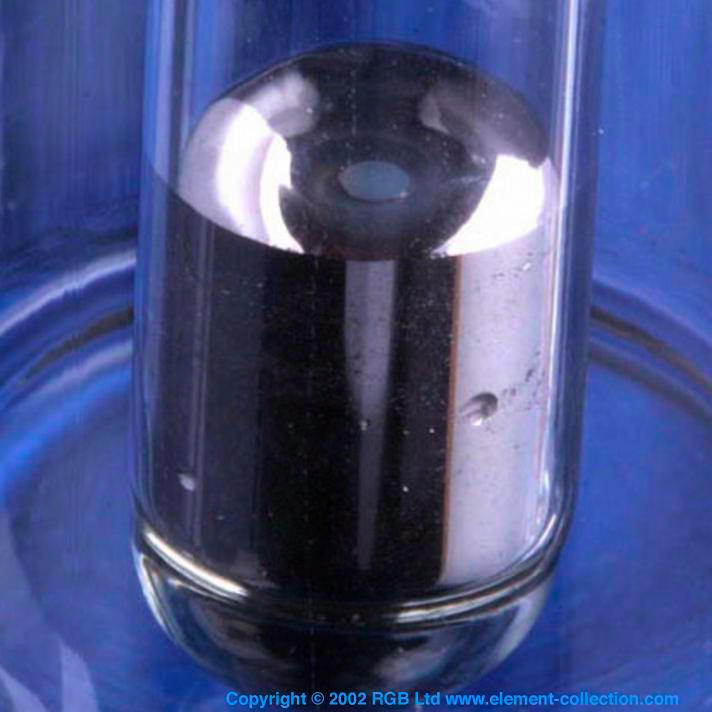

Temperature compensating pendulum.
To keep accurate time, a pendulum clock needs a pendulum whose center of gravity remains constant. Unfortunately when the metal shaft of a pendulum warms up, it expands, shifting the center of gravity down and causing the clock to run slow. To compensate for this, glass vials containing mercury can be placed at the bottom of the pendulum. Not only is mercury nice and heavy, making for a good solid pendulum, it also expands more than most other metals on heating. Thus as the pendulum warms up the bottom of the vials moves down (because the shaft gets longer) but the mercury gets taller, shifting the center of gravity back up where it belongs. How much more accurate this made a clock I don't know: In any case a cheap electronic clock now is vastly more accurate than any of these ever were.
�b���18�@���A�u�K�̹�M���ηs�u���N�x���V�ӶV�h�A�p�ɷǽT�פ]�麥�b�ﵽ���C�b1676�~���������֮�Thomas Tompion���^��Ӯa��L�ªv�Ѥ�x�]Royal Observatory in Greenwich�^�A�s�y�F�@�Ӻ�T�������A��T�ׯ�����C�ѻ~�t�b2��3���C

Year-Going Pendulum Clock by Thomas Tompion, London, 1676
This clock is one of a pair that were originally built into the panelling of the Octagon Room in the Observatory and had 13-foot (almost 4 m) pendulums suspended above them. They were removed in 1719 by the widow of the first Astronomer Royal, John Flamsteed, and sold as domestic longcase clocks. One is preserved at the British Museum and the other has now returned to Greenwich. This picture shows a detail of the movement. The primary achievement of these two clocks was to prove that the earth spins on its axis at a uniform rate.
�j��50�~��A����������John Harrison�سy�F�@�Ӻ�Ǯ����A�䤤�įǤF�L�s�o�����]�θ��v�\ (temperature-compensated gridiron pendulum)�A�N��T�ױ��e�F�ܨC��~�t�u���@���C
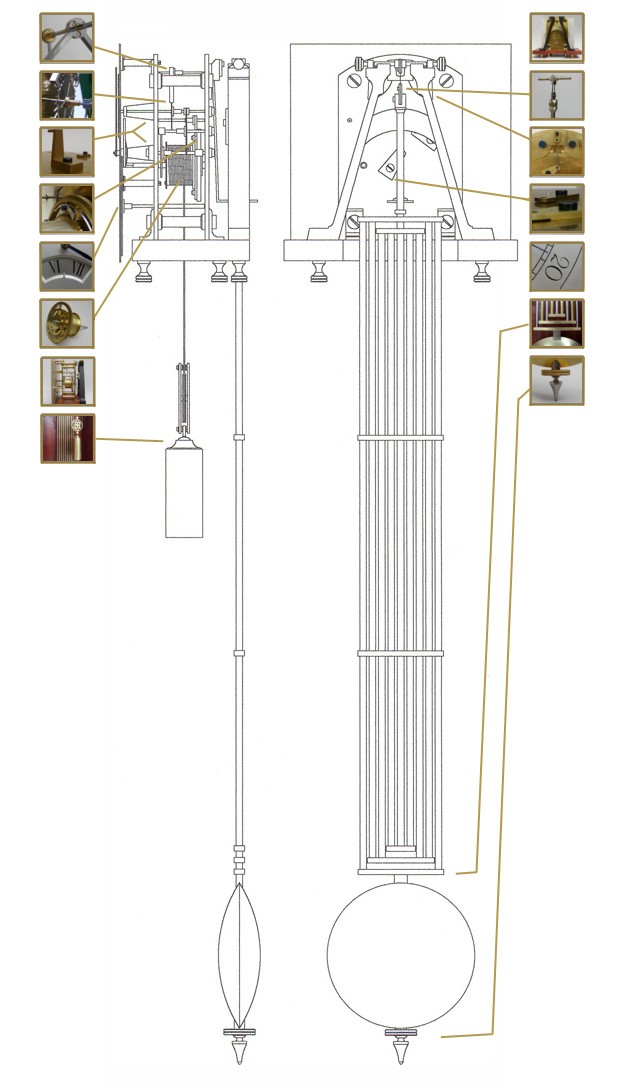
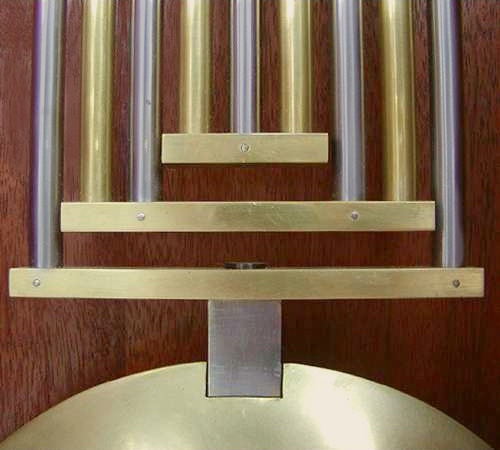
The relative expansion of the steel and brass rods compensate for changes in temperature

The priceless Late Regulator clock took John Harrison, the pioneer of longitude, 36 years to build and he was still calibrating it when he died at his home in London on March 24, 1776, his 83rd birthday.
1900�~�A�w�ꪺ�̤ҰǤ��q�]Riefler Company�^�s���F�ǽT�F�ܨC�@�ѻ~�t0.01�����p�ɾ��C�o��}���ȬO�ѩ�O�ǭ�z�M���ݧ��Ƨ�i�A�ӥB�]�O�ѩ�o���F�s���~�߳]�p�C���F�O�����w�����O�B�ūשM��סA�u�K�̧��T���������b�K���z���������n���C�H�᪺�]�p�A�]�`�`��o�Ǭ����n��m�b��Ǫ������~���C



In 1904 NIST purchased a very stable pendulum clock, the Riefler Clock (left) from Clemens Riefler in Germany. This clock served as a time interval standard until 1929 when it was replaced by the Shortt Clock (right), a double pendulum clock developed at Edinburgh Observatory and fabricated in London. This mechanical standard was replaced only a few years later by standards based on electronic methods. (NIST-National Institute of Standards and Technology)
�o�Ǯ����R����|�쥿�T���A�O�H���H�m�H���ǽT�ʡe�ѩ���ɪ���Ǯa�|���q�ױo���L�q���ɶ��ȡf�C�Ҧp�A��SW.H. Shortt�b1920�~�s�@����S��Shortt Clock�A�Q�{���O�O���ɶ��~�t�Ȧb��@���] 0.002 �^�@�ѡA���L�A�b1984�~�i��@�����ծɡA�H���o�{�o�Ӫ�S���O�����ɶ��~�t�ȥH200�L���]0.0002�^�@�ѡA�����{�������Q���H�W���ǽT�סC

High Precision 'Free Pendulum' Clock by W.H. Shortt, London, No. 16, 1927

This Synchronome housed at the Beijing Ancient Observatory includes a second hand and a 24 hour dial.
17�@�������A�q�j�Q��Ǯa���Q��Galilei�o�{�F���\�����ɩʡC
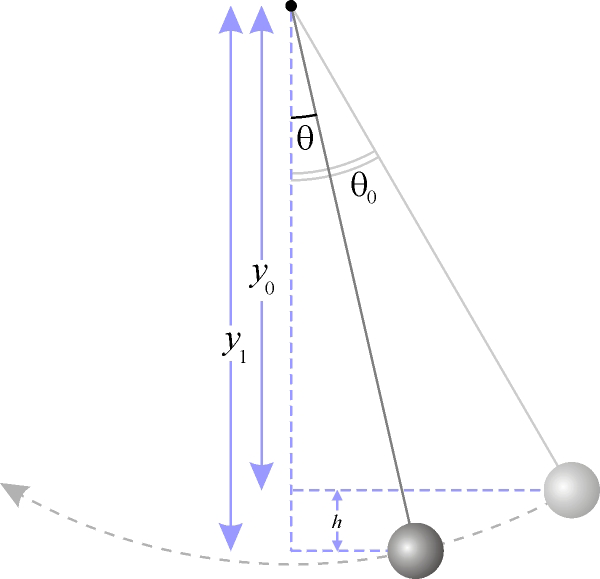
1656�~�A�������z�Ǯa�f��Christiaan Huygens�Q�γo�@�ʽ��X�F�Ĥ@�ӹ�Ϊ������\���A�q���H���x���F�����T�����q�ɶ�����k�C

1658�~�^�ꪫ�z�Ǯa�J�JRobert Hooke�o���F���\�����h���A1760�~�㦳�ɡB���B���T�Ӱw���h���ݥ@�A�������[�㦳��λ��ȡC�̺�T���������n��1920�~�ݥ@����S��Shortt Clock�A���@�ީ]�~�t�u���d�����@���A�Q���ɪ��Ѥ�O�Ψӧ@�Ѥ����C
���O�������Ⱦ_�A�@���p�a�_�N�i��ϥ����\�β����j���~�t�A�ӥB������פ���A�����F�C20�@��30�~�N�ۭ^���ݥ@�F�A���@�ީ]�~�t�u���U�����@���A�R���F�Ѥ���������C

Crystals of quartz

In 1928 at Bell Telephone Laboratories in New York, Warren A. Marrison developed the first quartz-crystal clock. The escapement and pendulum concept was replaced by the measurement of a standard frequency of the vibration of a quartz crystal. By the end of World War II, quartz-crystal clocks were accurate to one second in 30 years, and became the standard for time measurement until the arrival of the atomic clock.

��ӤH�̵o�{�Y�Ǫ��誺���l�έ�l����í�w���p�ɥ\��A��O�X�{�F��l���C�@�ɤW�Ĥ@�x��l��1949�~�b����y�X�C��l���B��3000�h�~�~����1�����~�t�A�ҥH�ثe�Ѥ�x�ϥΪ����O��l���C

1952 -- NIST completes the first accurate measurement of the frequency of the cesium clock resonance. The apparatus for this measurement is named NBS-1.

1975 -- NBS-6 begins operation; an outgrowth of NBS-5, it is one of the world��s most accurate atomic clocks, neither gaining nor losing one second in 300,000 years.

1993 -- NIST-7 comes on line; eventually, it achieves an uncertainty of 5 x 10-15, or 20 times more accurate than NBS-6.

1999 -- NIST-F1 begins operation with an uncertainty of 1.7 x 10-15, or accuracy to about one second in 20 million years, making it one of the most accurate clocks ever made (a distinction shared with similar standards in France and Germany).
�Q�K�@���H�ӡA�@�����������T�סA���������s�j�������ӤH�p�ɻݭn�C���b��Ǭ�s�譱�A�N�ݭn�@�ǧh���e��T�קf���ɭp�A�b����ǩM�[��ϥΡC���F�����o�ػݨD�A���K�ݭn�o�i�X�@�ǧ��T�������C
18�@����A�H�̤w���D�ū|�Ϯ��������ݿ��ȩM���Y�A�q�Ӽv�T�p�ɺ�T�סC

Figure 1 - Temperature effect on a Hermle movement

Figure 2 - Temperature effect on a pocket watch

Figure 3 - Experimental pendulum
�b1715�~�A��v���z��George Graham���F�j�q�������P���ݪ���������s�A�Ʊ�����ت��ݡA�䪺���Ȥ�v�|�ۤ����v�Τ��ۨ����C�L�o�{����steel�M�ߩʪ����ݨEviscous metal mercury��y���o�����Y�A�b1722�~�o���F�ū��v�\mercury-compensated pendulum�C���z��Graham���u�@�A���U��}�Ф@�ӷs�ɥN����K�p�ɡC
Temperature compensating pendulum.
To keep accurate time, a pendulum clock needs a pendulum whose center of gravity remains constant. Unfortunately when the metal shaft of a pendulum warms up, it expands, shifting the center of gravity down and causing the clock to run slow. To compensate for this, glass vials containing mercury can be placed at the bottom of the pendulum. Not only is mercury nice and heavy, making for a good solid pendulum, it also expands more than most other metals on heating. Thus as the pendulum warms up the bottom of the vials moves down (because the shaft gets longer) but the mercury gets taller, shifting the center of gravity back up where it belongs. How much more accurate this made a clock I don't know: In any case a cheap electronic clock now is vastly more accurate than any of these ever were.
�b���18�@���A�u�K�̹�M���ηs�u���N�x���V�ӶV�h�A�p�ɷǽT�פ]�麥�b�ﵽ���C�b1676�~���������֮�Thomas Tompion���^��Ӯa��L�ªv�Ѥ�x�]Royal Observatory in Greenwich�^�A�s�y�F�@�Ӻ�T�������A��T�ׯ�����C�ѻ~�t�b2��3���C

Year-Going Pendulum Clock by Thomas Tompion, London, 1676
This clock is one of a pair that were originally built into the panelling of the Octagon Room in the Observatory and had 13-foot (almost 4 m) pendulums suspended above them. They were removed in 1719 by the widow of the first Astronomer Royal, John Flamsteed, and sold as domestic longcase clocks. One is preserved at the British Museum and the other has now returned to Greenwich. This picture shows a detail of the movement. The primary achievement of these two clocks was to prove that the earth spins on its axis at a uniform rate.
�j��50�~��A����������John Harrison�سy�F�@�Ӻ�Ǯ����A�䤤�įǤF�L�s�o�����]�θ��v�\ (temperature-compensated gridiron pendulum)�A�N��T�ױ��e�F�ܨC��~�t�u���@���C


The relative expansion of the steel and brass rods compensate for changes in temperature

The priceless Late Regulator clock took John Harrison, the pioneer of longitude, 36 years to build and he was still calibrating it when he died at his home in London on March 24, 1776, his 83rd birthday.
1900�~�A�w�ꪺ�̤ҰǤ��q�]Riefler Company�^�s���F�ǽT�F�ܨC�@�ѻ~�t0.01�����p�ɾ��C�o��}���ȬO�ѩ�O�ǭ�z�M���ݧ��Ƨ�i�A�ӥB�]�O�ѩ�o���F�s���~�߳]�p�C���F�O�����w�����O�B�ūשM��סA�u�K�̧��T���������b�K���z���������n���C�H�᪺�]�p�A�]�`�`��o�Ǭ����n��m�b��Ǫ������~���C



In 1904 NIST purchased a very stable pendulum clock, the Riefler Clock (left) from Clemens Riefler in Germany. This clock served as a time interval standard until 1929 when it was replaced by the Shortt Clock (right), a double pendulum clock developed at Edinburgh Observatory and fabricated in London. This mechanical standard was replaced only a few years later by standards based on electronic methods. (NIST-National Institute of Standards and Technology)
�o�Ǯ����R����|�쥿�T���A�O�H���H�m�H���ǽT�ʡe�ѩ���ɪ���Ǯa�|���q�ױo���L�q���ɶ��ȡf�C�Ҧp�A��SW.H. Shortt�b1920�~�s�@����S��Shortt Clock�A�Q�{���O�O���ɶ��~�t�Ȧb��@���] 0.002 �^�@�ѡA���L�A�b1984�~�i��@�����ծɡA�H���o�{�o�Ӫ�S���O�����ɶ��~�t�ȥH200�L���]0.0002�^�@�ѡA�����{�������Q���H�W���ǽT�סC

High Precision 'Free Pendulum' Clock by W.H. Shortt, London, No. 16, 1927

This Synchronome housed at the Beijing Ancient Observatory includes a second hand and a 24 hour dial.
17�@�������A�q�j�Q��Ǯa���Q��Galilei�o�{�F���\�����ɩʡC

1656�~�A�������z�Ǯa�f��Christiaan Huygens�Q�γo�@�ʽ��X�F�Ĥ@�ӹ�Ϊ������\���A�q���H���x���F�����T�����q�ɶ�����k�C

1658�~�^�ꪫ�z�Ǯa�J�JRobert Hooke�o���F���\�����h���A1760�~�㦳�ɡB���B���T�Ӱw���h���ݥ@�A�������[�㦳��λ��ȡC�̺�T���������n��1920�~�ݥ@����S��Shortt Clock�A���@�ީ]�~�t�u���d�����@���A�Q���ɪ��Ѥ�O�Ψӧ@�Ѥ����C
���O�������Ⱦ_�A�@���p�a�_�N�i��ϥ����\�β����j���~�t�A�ӥB������פ���A�����F�C20�@��30�~�N�ۭ^���ݥ@�F�A���@�ީ]�~�t�u���U�����@���A�R���F�Ѥ���������C

Crystals of quartz
In 1928 at Bell Telephone Laboratories in New York, Warren A. Marrison developed the first quartz-crystal clock. The escapement and pendulum concept was replaced by the measurement of a standard frequency of the vibration of a quartz crystal. By the end of World War II, quartz-crystal clocks were accurate to one second in 30 years, and became the standard for time measurement until the arrival of the atomic clock.

��ӤH�̵o�{�Y�Ǫ��誺���l�έ�l����í�w���p�ɥ\��A��O�X�{�F��l���C�@�ɤW�Ĥ@�x��l��1949�~�b����y�X�C��l���B��3000�h�~�~����1�����~�t�A�ҥH�ثe�Ѥ�x�ϥΪ����O��l���C

1952 -- NIST completes the first accurate measurement of the frequency of the cesium clock resonance. The apparatus for this measurement is named NBS-1.

1975 -- NBS-6 begins operation; an outgrowth of NBS-5, it is one of the world��s most accurate atomic clocks, neither gaining nor losing one second in 300,000 years.

1993 -- NIST-7 comes on line; eventually, it achieves an uncertainty of 5 x 10-15, or 20 times more accurate than NBS-6.

1999 -- NIST-F1 begins operation with an uncertainty of 1.7 x 10-15, or accuracy to about one second in 20 million years, making it one of the most accurate clocks ever made (a distinction shared with similar standards in France and Germany).
# 2
Mercury pendulum�������\
���ȷū��v�\�誺�B�@��z�A�������\��J�����ȦV�U���i�C�����\������W���K�ʪ����ȷ|�V�W�X�i�A���\�譫�ߦV�W���ɡA�q�ө�P�F�����\��J�����ȡA�V�U���������סC
�������зǮ���(regulator clocks)�|�ĥΤ��ȸ��v���\��C�j�����k��������O���C����s�y���зǮ���(regulator clocks)�q�`�|�ϥ���Ȫ����ݬW�N���A�ΥΥ��i�o���ƫG�R�����l�u���J�����ҥ�o�اλ��C�@�Ǭ���зǮ����]�|�Τ��Ȥp�~�A���L�۫H�O��ӧ�Ϊ��C
�ѩ���Ȭ����W�ܩ��l�a�A����]�ܰ��A�����p�ߺL�}�ɡA�ݭn�w�s�~���o�C�H�̫K�Q��ϥΪ��ݬW�N���A�@�ӥi�H���챵�ū��v�ĪG�A�t�@�譱�l�a�����|�]��֡C�o�i�ܫ�ӡA�u�����W�Q�������~�ϥίu���ȬW�C
Pictures borrowed



���ȷū��v�\�誺�B�@��z�A�������\��J�����ȦV�U���i�C�����\������W���K�ʪ����ȷ|�V�W�X�i�A���\�譫�ߦV�W���ɡA�q�ө�P�F�����\��J�����ȡA�V�U���������סC
�������зǮ���(regulator clocks)�|�ĥΤ��ȸ��v���\��C�j�����k��������O���C����s�y���зǮ���(regulator clocks)�q�`�|�ϥ���Ȫ����ݬW�N���A�ΥΥ��i�o���ƫG�R�����l�u���J�����ҥ�o�اλ��C�@�Ǭ���зǮ����]�|�Τ��Ȥp�~�A���L�۫H�O��ӧ�Ϊ��C
�ѩ���Ȭ����W�ܩ��l�a�A����]�ܰ��A�����p�ߺL�}�ɡA�ݭn�w�s�~���o�C�H�̫K�Q��ϥΪ��ݬW�N���A�@�ӥi�H���챵�ū��v�ĪG�A�t�@�譱�l�a�����|�]��֡C�o�i�ܫ�ӡA�u�����W�Q�������~�ϥίu���ȬW�C
Pictures borrowed



# 3
Temperature-compensated gridiron pendulum
�]�ηū��v�\
�ھ����\��z(isochronous property of the pendulum)�A���\���B�ʮɶ��A���M���\�쪺���סC�\��V���A�B�ʪ��ɶ��V���F�\��V�u�A�B�ʪ��ɶ��K�֡C
�����������A�h�ĥΪ������\�A�\������ū��ܤƼv�T�A�ɭP���ɤ��ǽT�C�b1715�~�A�^��HGeorge Graham�o���F�����\��A�ﵽ�F�ū�������v�T�C
�b1725�~�A�^��H����������John Harrison�o���F�]�����\�A�Υt�@�ؤ�k�A�ѨM�ū�����\�쿱�Ȫ����v���D�C�L�ĥζ��ɩM�K�զX�s�����ФءA�Ψ�ت��ݭp��X�U�ۤ��P���ū��Ȩt�ơA�]�p���]�Ϊ��զX�@�\��A���Ħa�ﵽ�F�ū��\�쪺�v�T�A�b�j�d�ūק��ܮɡA�]��ܦn�����{�C
Pictures borrowed


�]�ηū��v�\
�ھ����\��z(isochronous property of the pendulum)�A���\���B�ʮɶ��A���M���\�쪺���סC�\��V���A�B�ʪ��ɶ��V���F�\��V�u�A�B�ʪ��ɶ��K�֡C
�����������A�h�ĥΪ������\�A�\������ū��ܤƼv�T�A�ɭP���ɤ��ǽT�C�b1715�~�A�^��HGeorge Graham�o���F�����\��A�ﵽ�F�ū�������v�T�C
�b1725�~�A�^��H����������John Harrison�o���F�]�����\�A�Υt�@�ؤ�k�A�ѨM�ū�����\�쿱�Ȫ����v���D�C�L�ĥζ��ɩM�K�զX�s�����ФءA�Ψ�ت��ݭp��X�U�ۤ��P���ū��Ȩt�ơA�]�p���]�Ϊ��զX�@�\��A���Ħa�ﵽ�F�ū��\�쪺�v�T�A�b�j�d�ūק��ܮɡA�]��ܦn�����{�C
Pictures borrowed


# 4
Invar pendulum�]�����\
�]���A�]��(�K��)�X��invar alloys�A�S�W���ȿ��A�ڽd���C�o�O�@�طs���ݡA�S�ʬO�����ū��ܤƼv�T�A�ū��ȫY��0.0000012(����s���ūרt��)�C
�γo�ئX���s�������\�A���ū��ܤ����@�ɡA�u�|�v�T�C�Ѩ���0.052���C
�o�ئX�����t�@�دS�ʬO�ܺϩ�(nonmagnetic)�A�O�Q���A�y�λs�@���\�����ơC
�]���A�]��(�K��)�X��invar alloys�A�S�W���ȿ��A�ڽd���C�o�O�@�طs���ݡA�S�ʬO�����ū��ܤƼv�T�A�ū��ȫY��0.0000012(����s���ūרt��)�C
�γo�ئX���s�������\�A���ū��ܤ����@�ɡA�u�|�v�T�C�Ѩ���0.052���C
�o�ئX�����t�@�دS�ʬO�ܺϩ�(nonmagnetic)�A�O�Q���A�y�λs�@���\�����ơC
# 5
Wood pendulum ��������\
�t�I��|�����гo�س̭�l�����\�C
��������ȫY�Ƥ�@����ݲӡA�b�p�d�ūק��ܤU�A��²�檺�ɪ������\�S�Ӥ@�ǡC
�ҥH���ǥ����ƪ����|�Τ�����\���C�����C�ӮĪG�n�C
Picture borrowed
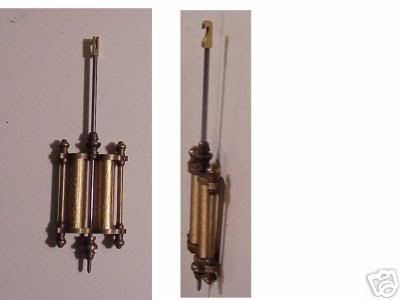
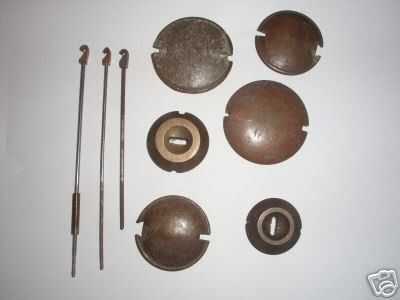
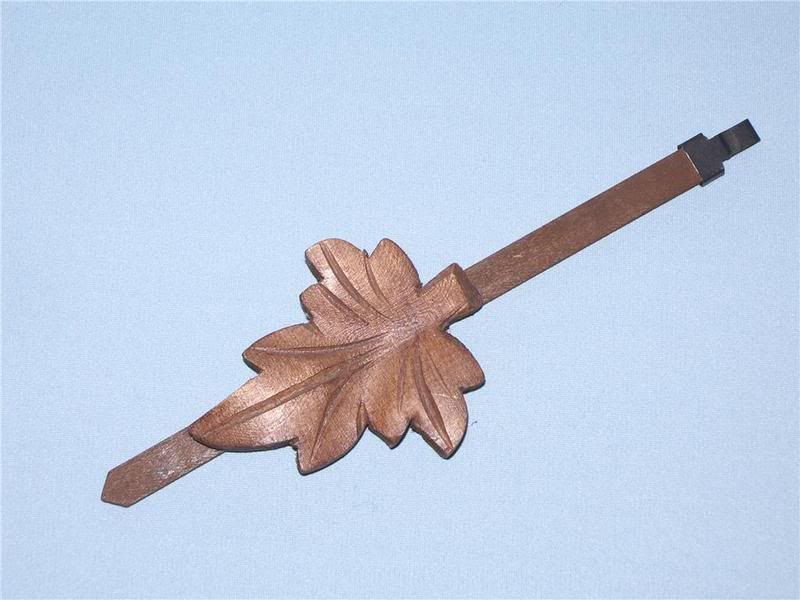
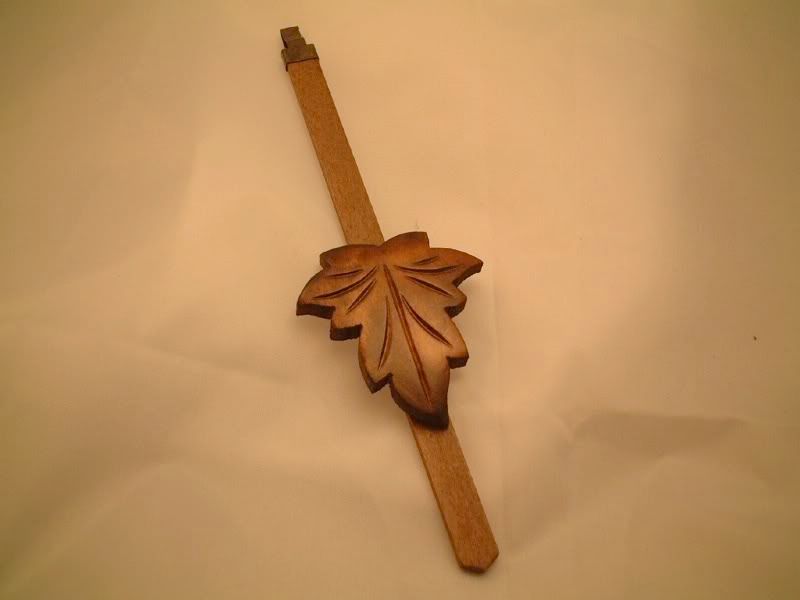
�t�I��|�����гo�س̭�l�����\�C
��������ȫY�Ƥ�@����ݲӡA�b�p�d�ūק��ܤU�A��²�檺�ɪ������\�S�Ӥ@�ǡC
�ҥH���ǥ����ƪ����|�Τ�����\���C�����C�ӮĪG�n�C
Picture borrowed









